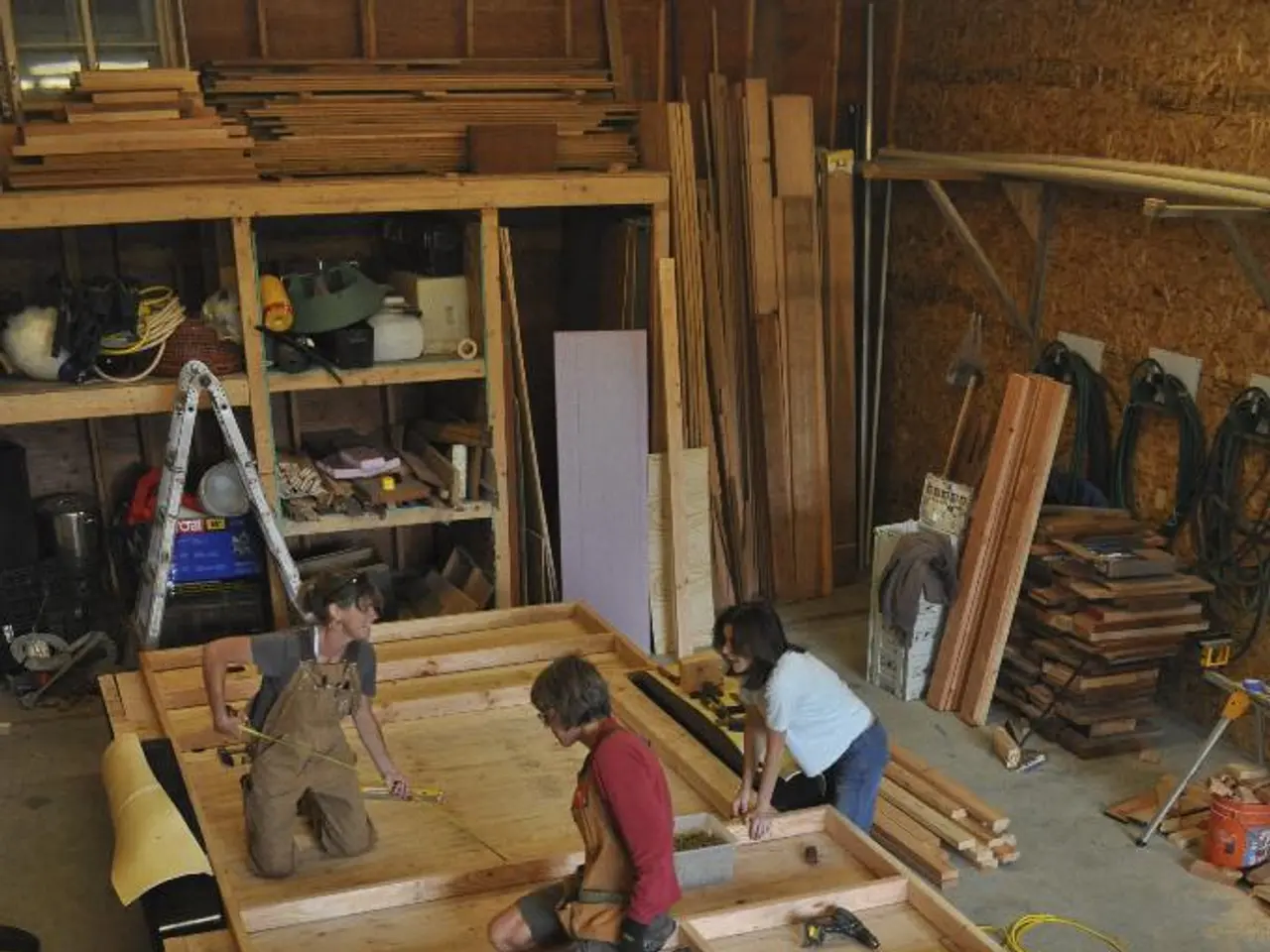Is the Office Space in 2025 Facing Extinction or Transformation?
The office landscape in 2025 is undergoing a significant transformation as a result of remote work, changing employee expectations, and technological advancements. This transformation is reflected in the current state and future trends of office spaces.
### Current State (2025)
In the present day, offices are adapting to the norm of hybrid work, with designs that support flexible work modes. Gone are the days of traditional assigned seating, replaced by neighborhood-style layouts that group workstations by teams or tasks, promoting collaboration and adaptability.
Businesses are also downsizing their office space, favouring more cozy or shared setups to optimize costs and efficiency. This response to sustained lower demand compared to pre-pandemic levels has resulted in current office space demand being around 70% of what it was before COVID-19.
Offices are also incorporating advanced technology, such as smart building systems for energy efficiency and improved user experience, acoustic treatments, wide-angle cameras, and digital whiteboards to facilitate seamless collaboration between in-person and remote employees.
A focus on wellness and emotional well-being is also evident in design trends, with elements inspired by neuroaesthetics like soft textures, warm lighting, and quiet zones being integrated to create spaces that actively nurture employee well-being rather than just function. Office furniture and layouts are modular and reconfigurable to accommodate changing work needs throughout the day or week.
### Future Trends (Looking Toward and Beyond 2025)
The future trends of office spaces reflect a continued focus on flexibility, technology, and well-being. Offices are evolving into "destination" spaces designed to attract employees back by offering unique, engaging, and wellness-focused environments that go beyond basic workstations.
There will be a continued downsizing and sharing of office spaces, with more emphasis on shared, flexible workspaces and smaller footprints. Some forecasts suggest an additional drop in office space demand by up to 13% or more by 2030 in certain cities.
Eco-friendly textiles, self-healing surfaces, and energy-efficient smart building technologies will become standard, contributing to resilient and sustainable workplaces. Future office designs will increasingly focus on inclusivity and sensory needs, ensuring spaces cater to diverse employee preferences and enhance comfort.
Offices will adopt more integrated tech solutions for remote collaboration, health monitoring, and environmental controls, making hybrid collaboration seamless and boosting productivity.
### Summary
By 2025, office spaces have shifted from traditional, static layouts to flexible, technologically integrated, and wellness-focused environments designed to support hybrid work and evolving employee needs. The "destination office" concept is emerging strongly, aiming to make the physical office a compelling place to be—one that fosters connection, creativity, and well-being, rather than just a place to work.
Downsizing and shared spaces remain trends due to sustained remote and hybrid work patterns, but investment in smart, adaptable, and human-centered office design continues to grow, pointing toward a more resilient and employee-centric future workplace. Real estate companies are offering shorter-term contracts, shared amenities, and customizable environments to provide flexibility.
The office in 2025 is evolving into a more dynamic, human-centered, and flexible space that complements remote work. Sustainability is a top priority in commercial real estate, with green certifications, energy-efficient systems, and carbon reporting becoming common. The growth of co-working spaces and flexible leases is a defining feature of the 2025 office market.
The demand for traditional office space has declined in the past few years, but the office is not extinct. Instead, it is adapting to a new era, evolving into hubs for collaboration, culture, and connection. Employees need a reason to come to the office, and in 2025, the office has to compete with the home. The growth of eco-friendly practices and technologies is a defining feature of the 2025 office market.
In the future, real-estate companies will continue to focus on sustainability, investing in eco-friendly materials and energy-efficient technologies to create resilient and environmentally friendly workplaces (sustainability). The office environment will also prioritize health and wellness, incorporating neuroaesthetics principles like soft textures, warm lighting, and quiet zones to enhance employee well-being (health). Moreover, offices will adopt advanced finance-driven strategies, such as shorter-term contracts and shared amenities, to maintain flexibility in response to changing business needs and remote work trends (finance).
To boost productivity and facilitate seamless remote collaboration, offices will implement integrated technology solutions, including smart building systems, acoustic treatments, wide-angle cameras, and digital whiteboards (technology, investing). As the demand for traditional office space declines, the focus will shift towards creating destination offices that go beyond basic workstations and offer unique, engaging, and wellness-focused environments to attract employees (business, environment). In addition, the growth of co-working spaces and flexible leases will characterize the 2025 office market (real-estate).




